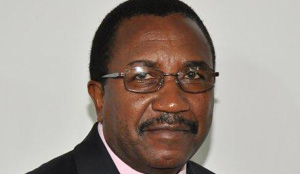
The Zambia 2010 Census of Population and Housing national analytical report was this week launched in which, it revealed that out of 2.5 million youths in the labour force, 16.7 per cent are unemployed.
Secretary to the Treasury Fredson Yamba launched the report in Lusaka where he appealed for more support from stakeholders to help Government in making available accurate, reliable and timely statistics for national planning, monitoring and evaluation.
The report provides updated data on demographic and socio-economic characteristics of the Zambian population at province, district, to the lowest administrative levels.
Zambia’s population in 2010 was 13,092,666 which increased from 9,885,591 in 2000 with the male population at 6.5 million representing 49.3 per cent while that of female was 6.6million representing 50.7 percent of the total population.
The report revealed that the population residing in the rural areas was 7.9 million (60.5 per cent) while the urban population was 5.1 million (39.5 per cent).
Lusaka had the highest density with 100.1 persons per square kilometre while the lowest population density was recorded in North-Western province at 5.8 persons per square kilometer.
On the unemployment rate involving youths between 15 to 35 years by rural, urban and province, 7.5 per cent were from rural areas, 22.0 per cent in urban.
In provinces, Muchinga had 7.7 per cent, unemployed youths, Northern 7.9 per cent, Luapula 9.3 per cent, Western 10.1 per cent, Eastern 10.4 per cent, North-Western 13.3 per cent, Southern 14.8 per cent, Central 16.2 per cent, Lusaka 25.1 while Copperbelt was at 29.6 per cent.
The report says 4.3 million persons were in labour force, out of which 2.4 million were males and 1.8 million females countrywide.
It says of the 4.3 million persons in labour force, 554,202 (13.0 per cent) were unemployed, with the Copperbelt province having the highest unemployment rate at 22.1 per cent while Northern Province was lowest at 6.3 per cent.
The Infant Mortality Rate (IMR) was 76 deaths per 1000 live births in which rural and urban areas had rates at 81 and 68 deaths per 1000 live births respectively.
Luapula had the highest IMR with 100, Eastern 97, Muchinga 84, Western 82, Northern 82, Central 71, Lusaka 68, Copperbelt 66, North-Western 58 and Southern Province 53.
The report further revealed that there were 25,324 Albinos in the country, of which 12,532 were males while 123,792 were females.
Mr Yamba called for increased technical and financial support from stakeholders to assist Government in statistical undertakings to make timely release of statistics for effective national planning.
“Population is our most valuable resource and we can only take stock of it through an activity like the census. We now have the data, therefore, the challenge remains with all of us to ensure it is put into good use by making informed decisions for our people,” he said.
Mr Yamba said the report was important as it would help how public resources could be shared evenly across the country and to ensure that services at local levels were relevant to all.
Earlier, Central Statistics Office (CSO) director John Kalumbi said information was key in any development process and that the national census was important for providing national statistics.
He thanked Government for providing the needed resources adding that the 2010 census could influence decisions by Government and several other stakeholders.


I kind of have a reason not to trust data from Cso.Sometimes this dudes don`t even go to the target places.They just sit by the rock somewhere and come up with figures.
NOW WHAT NEXT FOR OUR GOVERNMENT THAT FIGURES FOR UN EMPLOYED YOUTH ARE SO ALARMING. PLEASE DO THE NEED FUL TO REDUCE ON THE HIGH CRIME RATES IN THE COUNTRY INSTIGATED BY HIGH LEVELS OF UN EMPLOYMENT
My Tumbuka brethren we need to get busy and reproduce more.Its the only way we’ll get more influence and escape from the yoke of Bembastan and their cunning Tsar.
Should it take 3 years to release this report? I think by now the population has increased by 2 million
The figures on albinos are incorrect. Typo perhaps.
61% in rural areas? and these are the most neglected people; no access to clean water except the one they get from natural sources. No electricity; Damn, I hope PF is reading the report carefully to target and reshape their policies on services to rural areas. The data is here; now use it ba properly you people.
Mr.kabwa you,as a citizen of Zambia,have a very important role to play as well if you have to see that percentage of people out of their misery…….please reconsider your comment….
3 years later? WTF
Fredson Yamba is my man all the way. Biggop, biggop!
Can anybody inform me where in the Internet is it possible to get data about ethnic groups, languages and religions of the population of Zambia from the last 2010 population census?
Can anybody inform me – where in the Internet is it possible to get data about ethnic groups, languages and religions of the population of Zambia according to last 2010 population census?
Comments are closed.